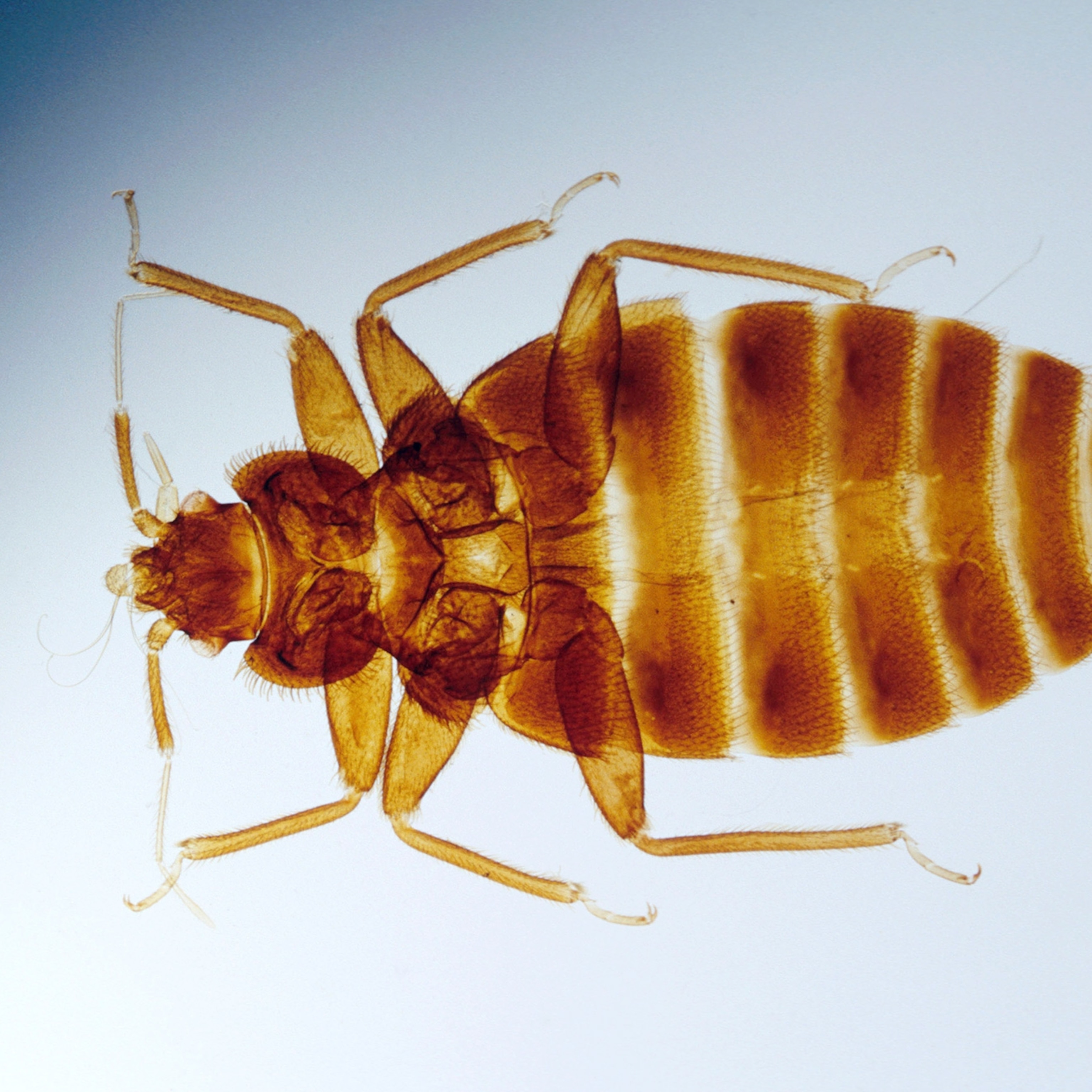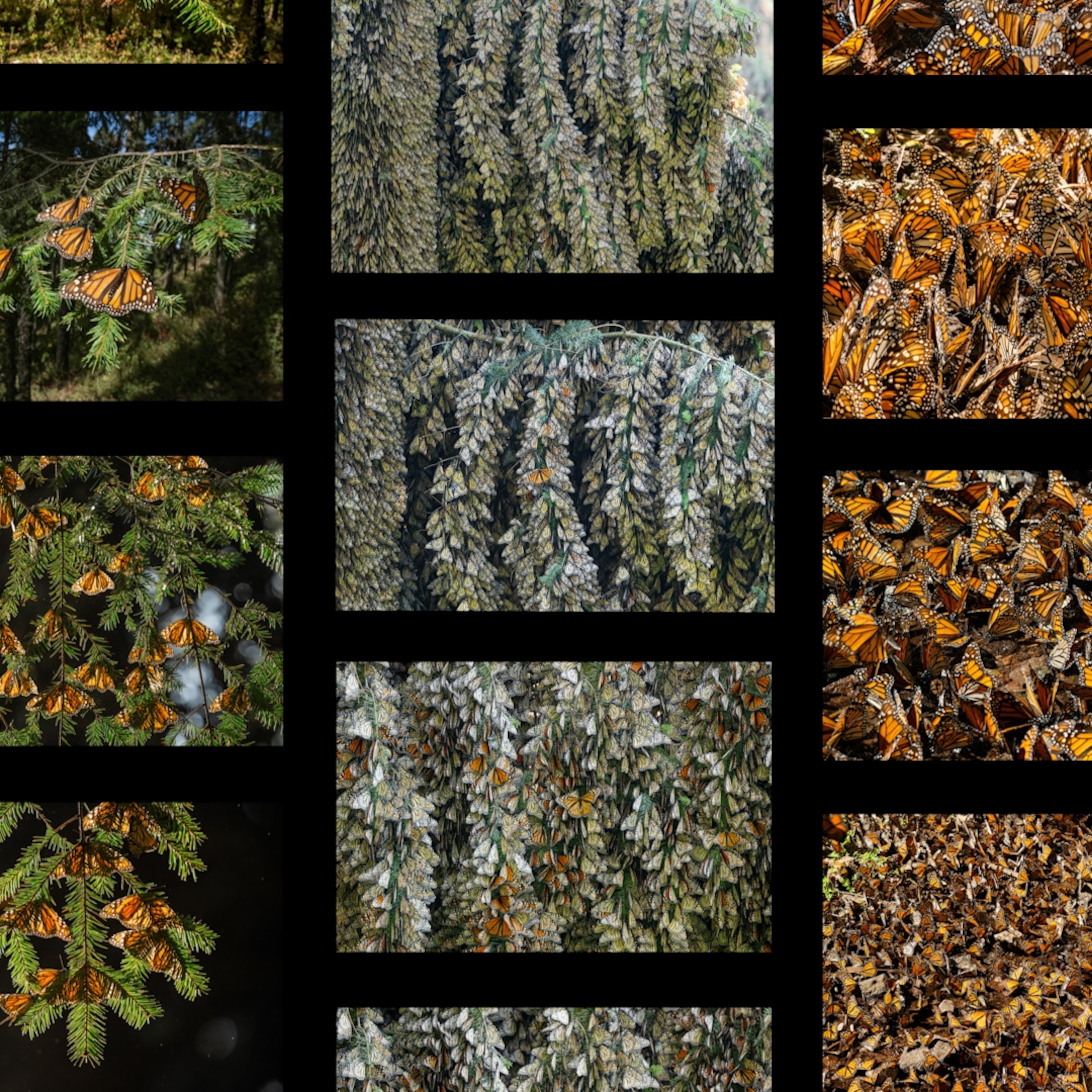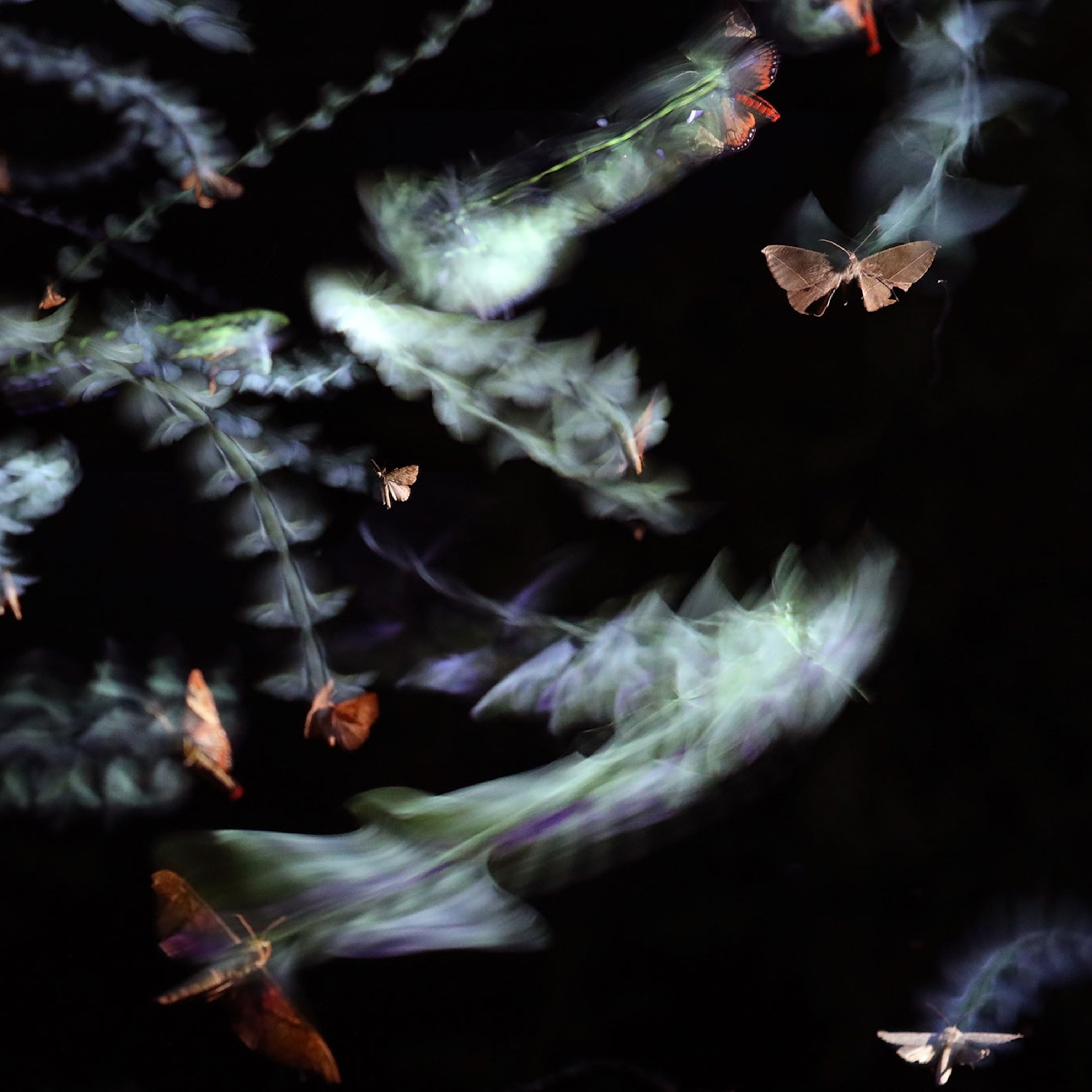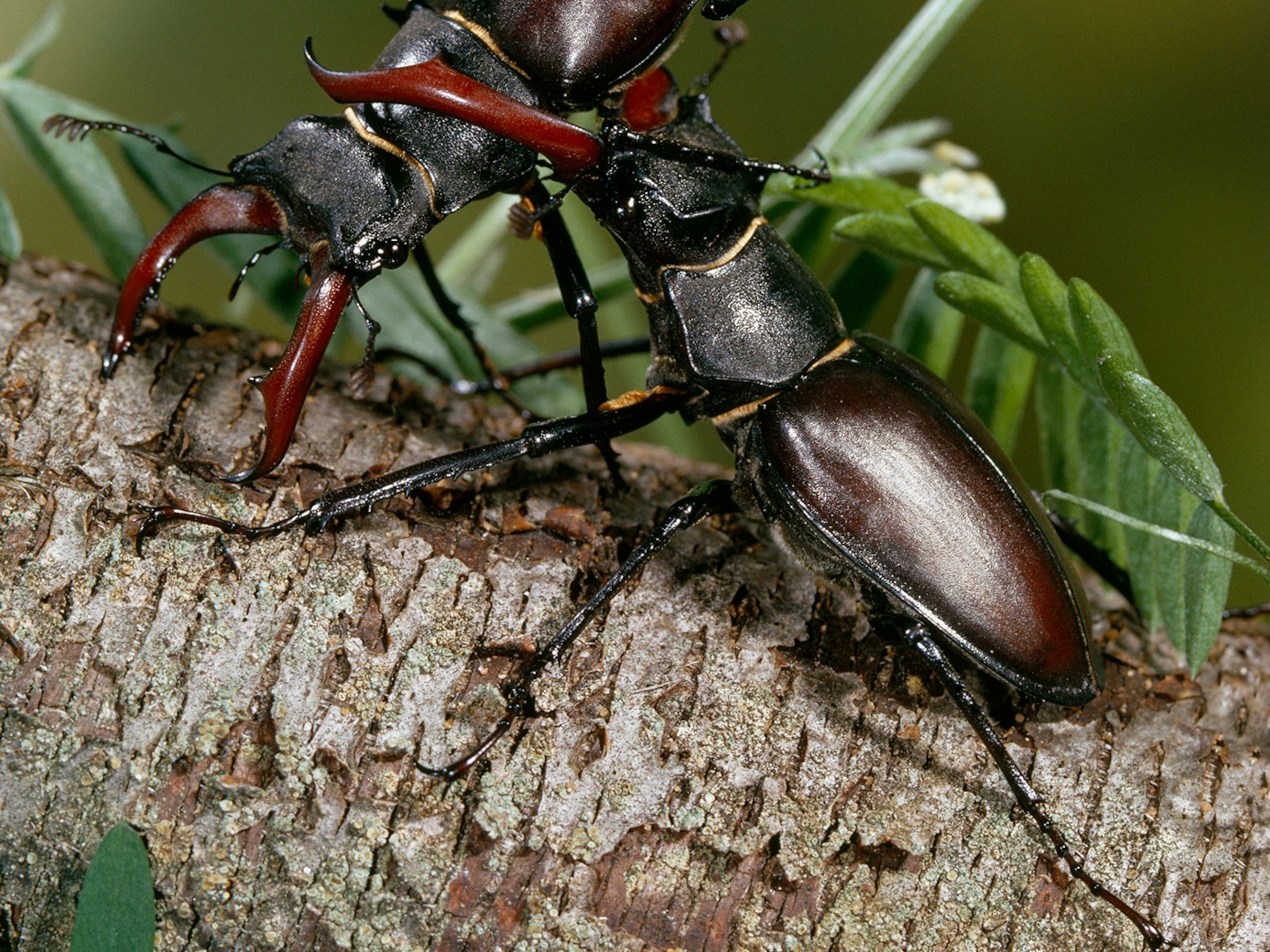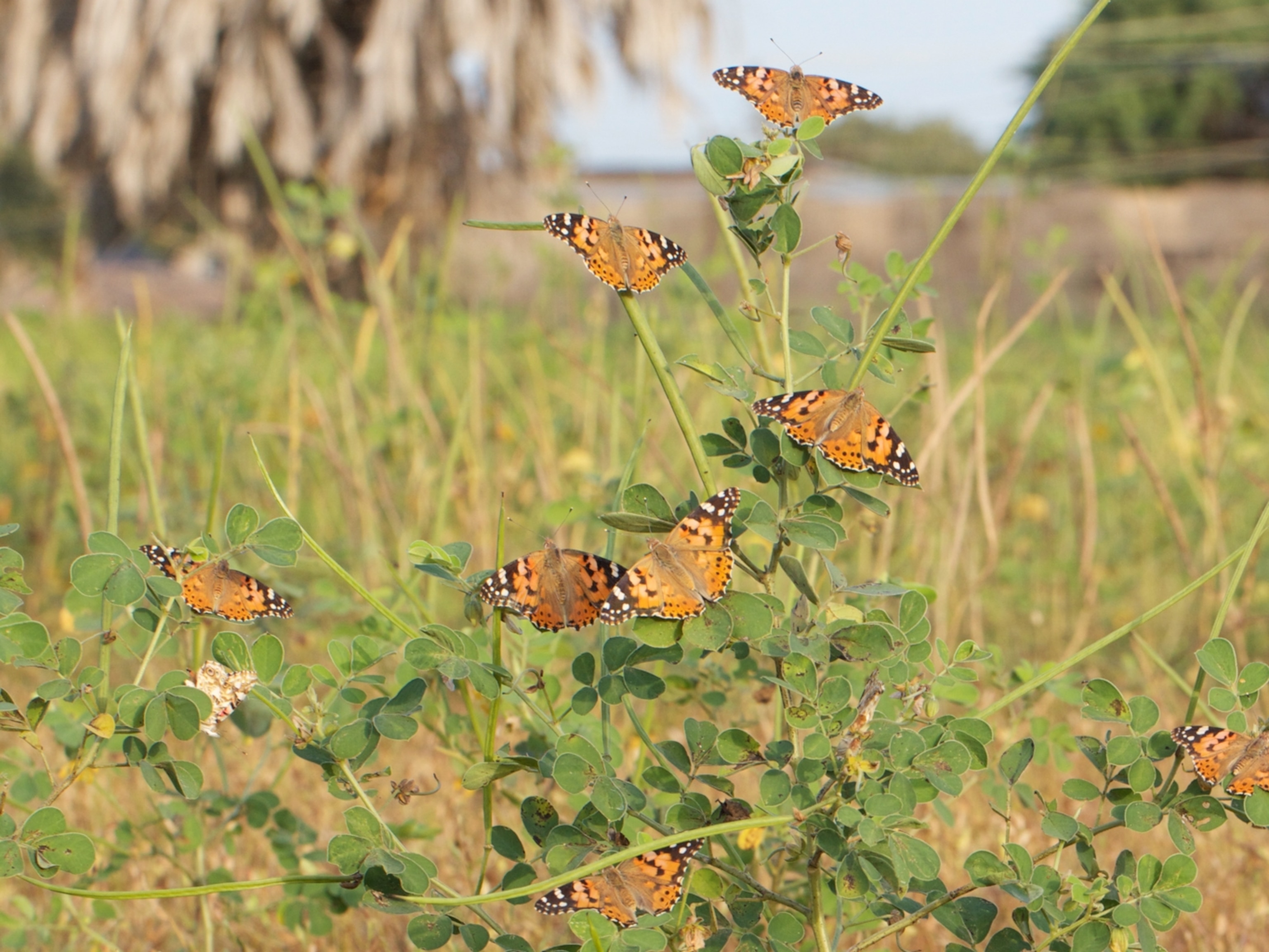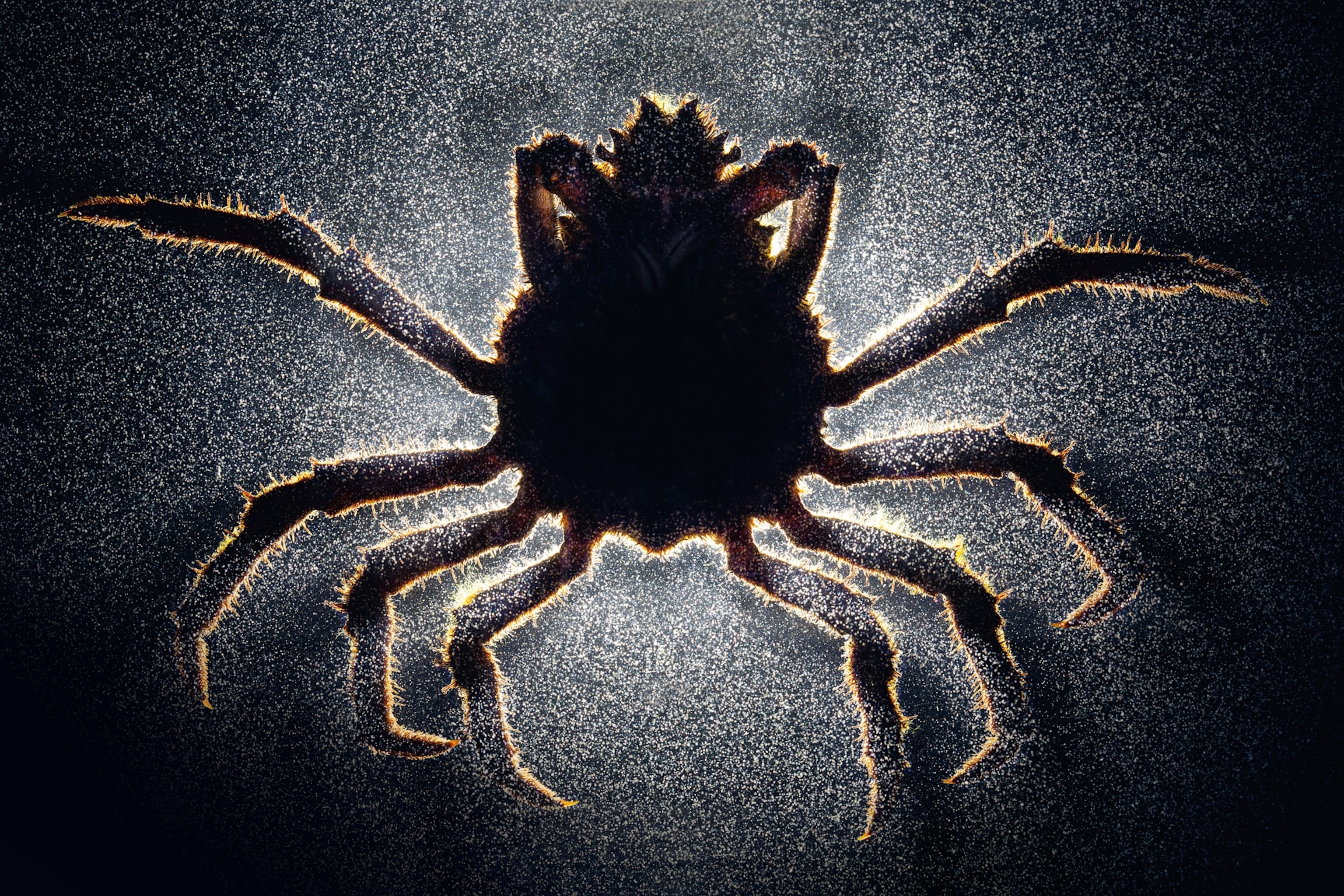
Mindsuckers
Meet Nature’s Nightmare
It is as astonishing as it is sad to watch a ladybug turn into a zombie. Normally ladybugs are sophisticated and voracious predators. A single individual may devour several thousand aphids in a lifetime. To find a victim, it first waves its antennae to detect chemicals that plants release when they’re under attack by herbivorous insects. Once it has homed in on these signals, the ladybug switches its sensory scan to search for molecules released only by aphids. Then it creeps up and strikes, ripping the aphid apart with barbed mandibles.
Ladybugs are also well protected against most of their enemies. Their red-and-black dome, so adorable to the human eye, is actually a warning to would-be predators: You will regret this. When a bird or some other animal tries to attack, the ladybug bleeds poison from its leg joints. The attacker tastes the bitter blood and spits the ladybug out. Predators learn to read the red-and-black wing covers as a message to stay away.
A predator protected from other predators, the ladybug would seem to have the perfect insect life—were it not for wasps that lay their eggs inside its living body.
One of these wasps, Dinocampus coccinellae, is about the size of an ice-cream sprinkle. When a female wasp is ready to lay an egg, she alights near a ladybug and swiftly inserts her stinger into its underside, injecting an egg into her victim along with a blend of chemicals. When the egg hatches, the larva feeds on the fluids that fill its host’s body cavity.
Though the ladybug is gradually being devoured, on the outside it seems unchanged. It goes on attacking aphids with abandon. But after it has digested its prey, its parasite feeds and grows on the resulting nutrients. Some three weeks later, the wasp larva has grown so much that it is ready to leave its host and develop into an adult. It squirms out through a chink in the ladybug’s exoskeleton.
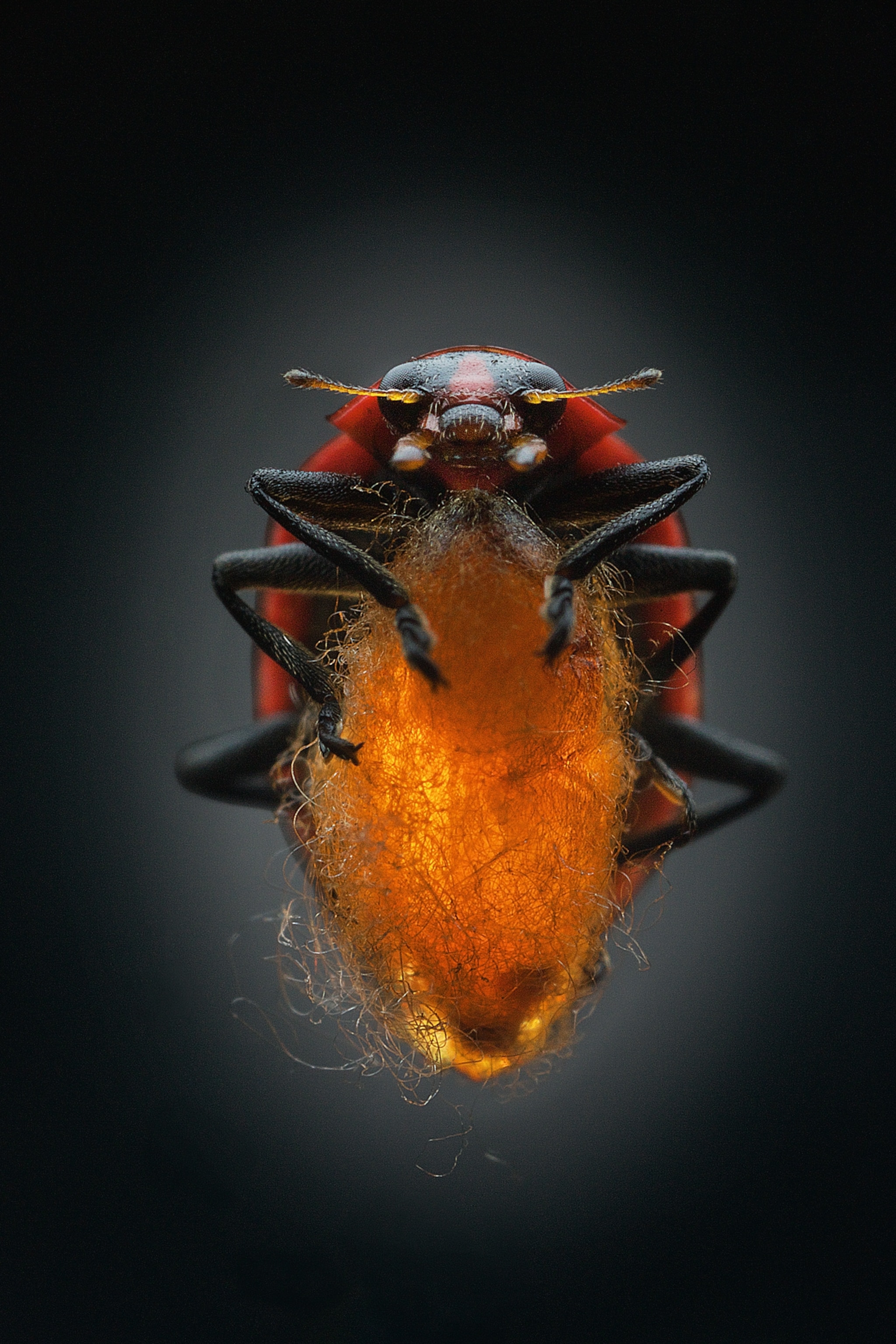
Even though the ladybug’s body now is free of the parasite, its mind remains enthralled. As the wasp larva wraps itself in a silk cocoon beneath it, the ladybug remains immobile.
From the wasp’s point of view, this is a very positive development. A growing D. coccinellae wasp nestled in its cocoon is intensely vulnerable. Lacewing larvae and other insects will happily devour it. But if one of these predators approaches, the ladybug will thrash its limbs, scaring off the attacker. In effect it has become the parasite’s bodyguard. And it will continue to loyally play this role for a week, until an adult wasp cuts a hole through the cocoon with its mandibles, crawls out, and flies away.
Only then do most of the ladybug zombies die, their service to their parasite overlord complete.
This sinister scene was not conceived by a scriptwriter. Across much of North America, wasps are converting ladybugs into zombie bodyguards in backyards and empty lots, in farm fields and wildflower meadows. Nor is the spotted lady beetle unique. Scientists are finding the same is true for a vast number of host species, ranging from insects to fish to mammals. They serve their parasite even if they must literally hurl themselves to their own death to do so. Across the natural world the same question arises again and again: Why would an organism do all it can to ensure its tormentor’s survival rather than fight for its own?
Serving as bodyguard is only one of the protective services provided to parasites by their hosts. A fly that infects bumblebees causes them to burrow into the ground in autumn, right before the fly emerges to form a pupa. In the ground the fly is protected not only from predators but also from the cold of winter.

In Costa Rica, the orb-weaving spider Leucauge argyra will go to extravagant lengths to accommodate the needs of Hymenoepimecis argyraphaga, another freeloading wasp. The female glues its egg to the host’s body. After the larva emerges, it pokes a few holes in the spider’s abdomen and sucks its blood. When the larva has grown to full size, in a couple of weeks, the spider takes it upon itself to rip down its own web and build a new one of a radically different shape. Instead of a multistranded net designed for catching flying insects, the new web is merely a few thick cables converging at a central point. Having sucked its host dry, the larva spins its cocoon on a thread hanging from the intersection of the cables. Suspended in the air, the cocoon is nearly impossible for would-be predators to reach.
Parasites can also coax a host to guard them while they’re still living inside it. Before infecting a human host, Plasmodium, the protozoan that causes malaria, spends the first stages of its life cycle in a mosquito. The mosquito needs to drink blood to survive. But this behavior poses a risk to the protozoan, because the mosquito may be crushed by the hand of an annoyed human victim, eliminating the opportunity forPlasmodium to move to the next stage of its life cycle, in the human. To reduce this risk while it is still developing in the mosquito, Plasmodium makes its host blood shy, seeking fewer victims each night and giving up faster if it can’t find a gusher of blood.
Once Plasmodium has matured and is ready to enter a human host, it manipulates the mosquito’s behavior in the opposite direction. Now the mosquito grows thirsty and foolhardy, seeking out more humans each night and biting repeatedly even if it is already full. If the mosquito dies at the hand of a human, it is no longer of any consequence. Plasmodium has moved on.

While Plasmodium tinkers with the ordinary behavior of its host to get to the next stage of its life cycle, other parasites wreak far more radical changes—often with fatal results. Killifish, for example, normally stay away from the surface of the water to avoid being picked off by wading birds. But when they’re infected with flatworms known as flukes, they spend more time near the surface and sometimes roll so that their silvery bellies glint in the light. Infected killifish are far more likely to be picked off than healthy ones. And it just so happens that the gut of a bird is where the flukes need to go next to mature and reproduce.
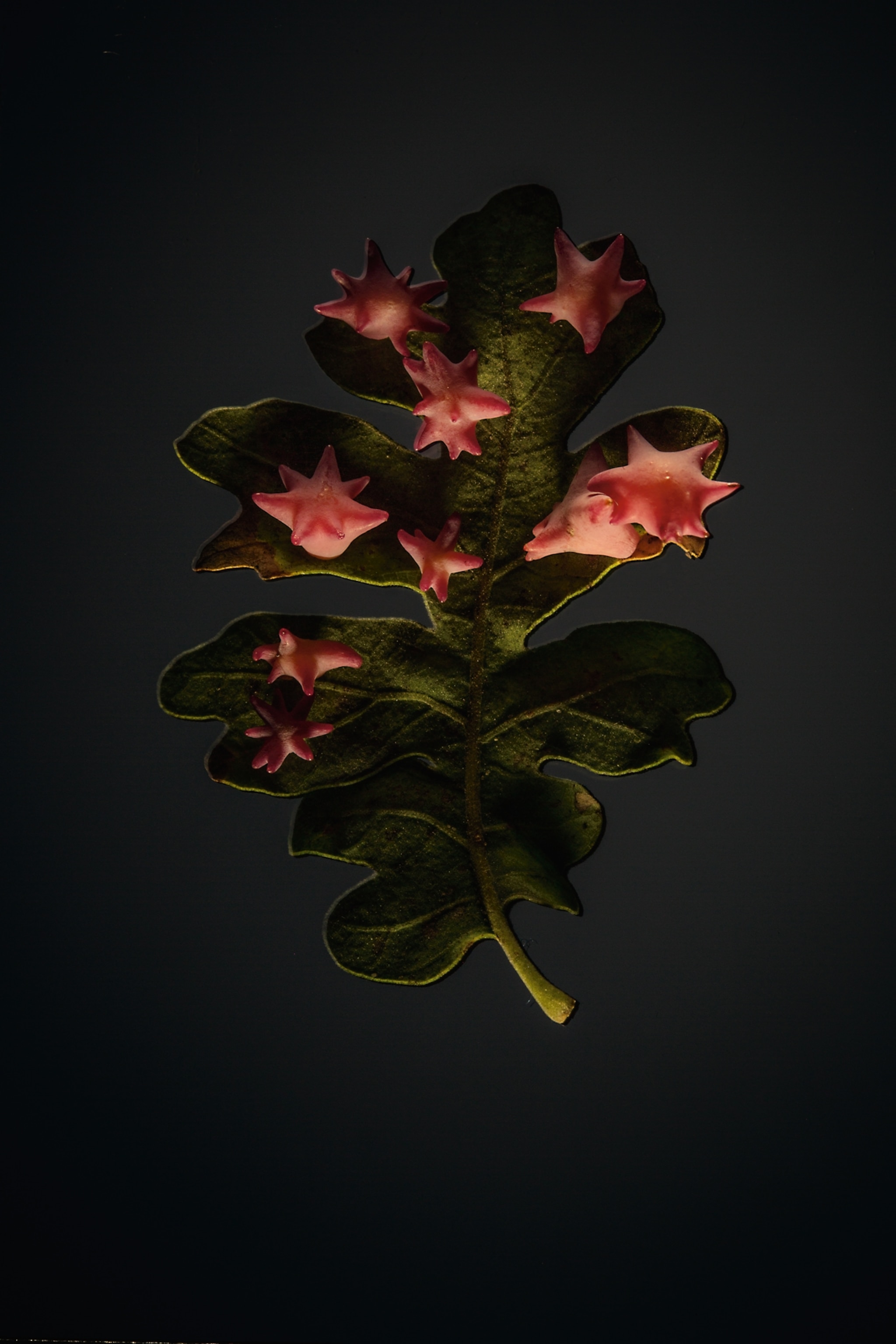
The best known mindsucking parasite plays out a similar manipulation on land. Along with other mammal species, rats and mice can be infected with Toxoplasma gondii, a single-celled relative of malaria-causing Plasmodium. The parasite can form thousands of cysts in the brain of its host. To take the next step in its life cycle,Toxoplasma has to get inside the gut of a cat. Toxoplasma doesn’t have the means to transport itself from a rat’s brain to a cat’s gut. But if its rat host gets eaten by a cat, the parasite can reproduce. Scientists have discovered that rats infected withToxoplasma lose their normal fear of the smell of cats. In fact some infected rats become downright curious about the odor of cat urine, making themselves easy targets for a swipe of a cat’s paw—and thus raising the odds that Toxoplasma will advance through its life cycle.
How mutations and natural selection could give rise to such creepy powers is a particularly intriguing puzzle for evolutionary biologists. One useful concept for thinking about it comes from biologist Richard Dawkins, author of the landmark book The Selfish Gene.
In that book Dawkins argued that genes evolve to make copies of themselves more successfully. Our bodies may be important to us, but from our genes’ point of view, they are nothing more than vehicles to get themselves intact into the next generation. The entire collection of the genes that make up you or me is called our genotype. The sum total of all the bodily parts and functions that our genotype creates to advance its cause—you or me—is called our phenotype.
It occurred to Dawkins that we don’t have to limit phenotypes to the boundaries of our bodies. They also include the behaviors brought about by our genes. A beaver’s genes encode its bones and muscles and fur. But they also encode the brain circuits that lead the beaver to gnaw at trees to build dams. The beaver benefits from the pond created by the dam in many ways. It’s harder for predators to attack the beaver’s lodge, for example, because of deeper surrounding water. If a gene mutation gives rise to a beaver that builds even better dams, that particular beaver phenotype may stand a better chance of survival and, on average, have more baby beavers itself. As a result, the mutation will become more common over the course of many generations. From an evolutionary perspective, the dam—and even the pond that it creates—is as much an extension of the beaver’s genes as its own body is.
If the power of a gene can extend to manipulation of the physical world, Dawkins wondered, could it not extend as well to the manipulation of another living creature? Dawkins argued that it could, and he pointed to parasites as his prime example. The ability of a parasite to control the behavior of a host is encoded in its genes. If one of those genes mutated, the host’s behavior would change.
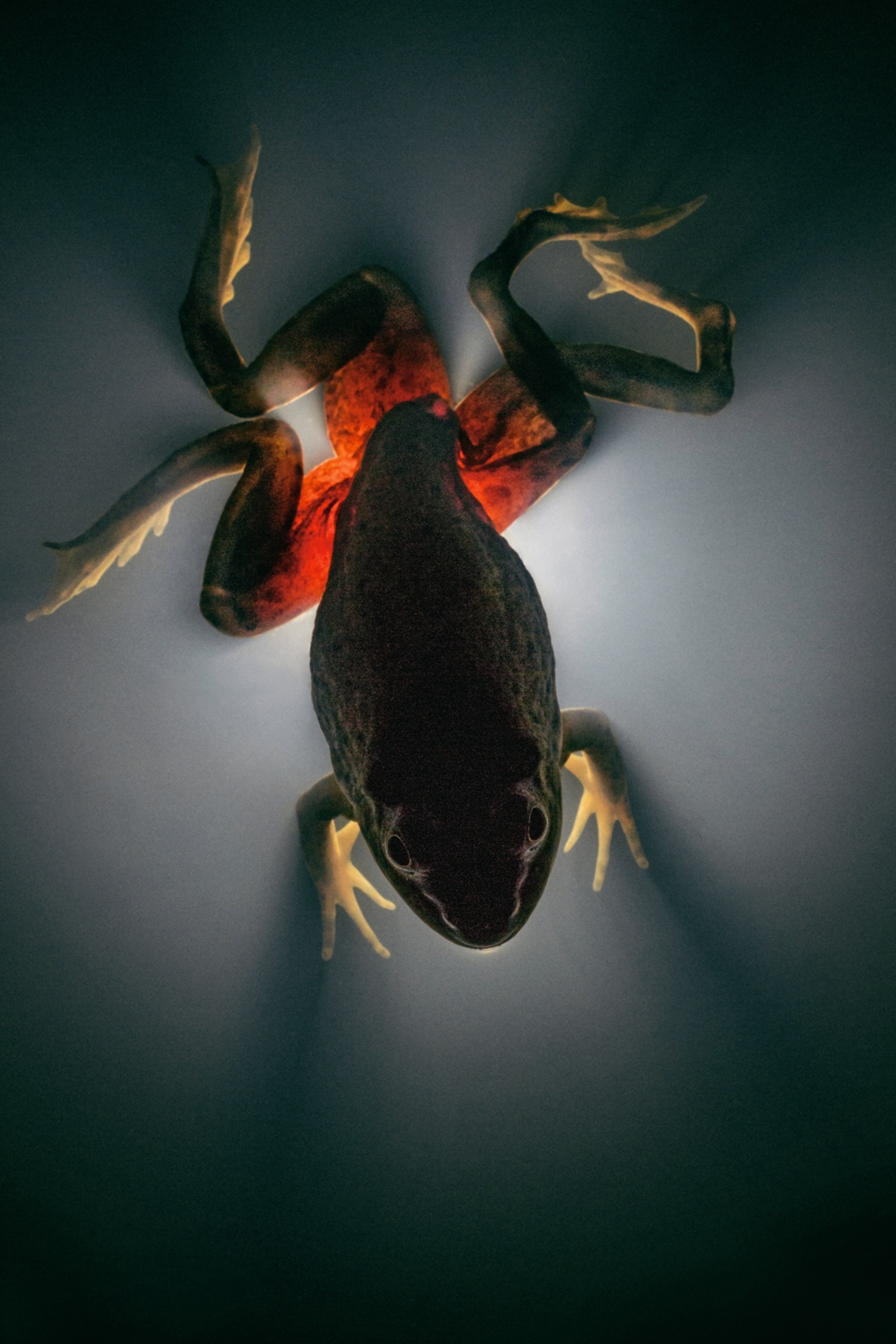
Depending on how it changed, the mutation might help or harm the parasite. If a flu virus mutates so that its victims lock themselves away and starve to death, the virus will be unlikely to spread to other hosts, and it will disappear from the population of viruses. A mutation in a parasite that influences a host’s behavior for the better will become more common. If a wasp acquires a mutation that compels its ladybug host to begin to act as a bodyguard, for example, its offspring carrying that trait will thrive, because fewer of them will be killed by predators.
Dawkins first developed these ideas in his 1982 book The Extended Phenotype. In many respects it was a book far ahead of its time. In the 1980s scientists had carefully studied only a few examples of parasites manipulating their hosts’ behavior. But if the hypothesis was correct, there had to be genes within the parasites that trumped the genes in the hosts themselves that normally controlled their actions.
Thirty-two years later, scientists are finally opening the black box of parasite mind control. Frederic Libersat of Ben-Gurion University and his colleagues, for example, are dissecting the sinister attacks of the jewel wasp, Ampulex compressa. The wasp stings a cockroach, transforming it into a passive zombie. The wasp can then walk its drugged victim into a burrow by the roach’s antenna, like a dog on a leash. The roach is perfectly capable of movement. It just lacks any motivation to move on its own behalf. The wasp lays an egg on the roach’s underside, and the roach simply stands there as the wasp larva emerges from the egg and digs into its abdomen.
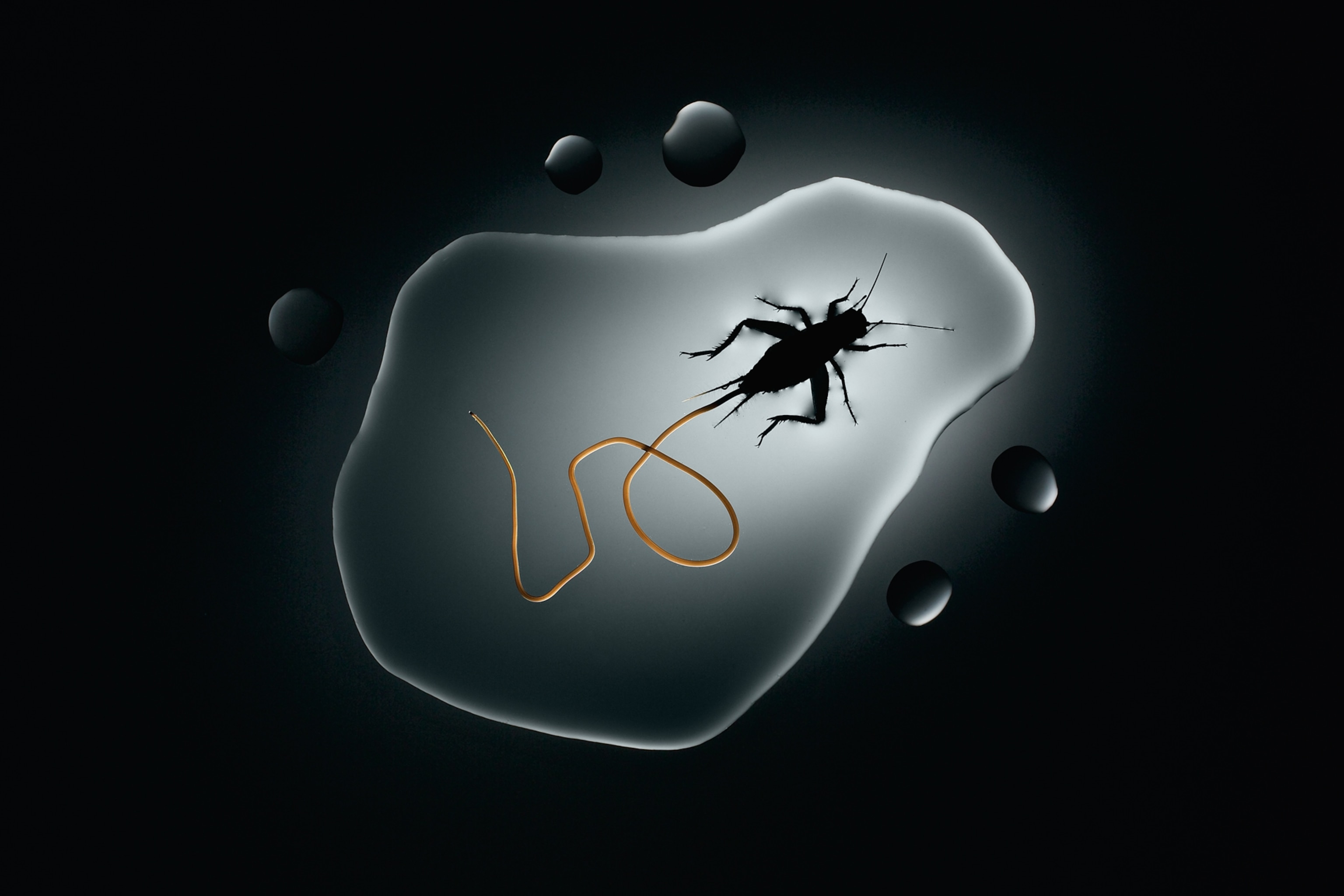
What is the secret hold that the wasp has over its victim? Libersat and his colleagues have found that the wasp delicately snakes its stinger into the roach’s brain, sensing its way to the regions that initiate movements. The wasp douses the neurons with a cocktail of neurotransmitters, which work like psychoactive drugs. Libersat’s experiments suggest that they tamp down the activity of neurons that normally respond to danger by prompting the cockroach to escape.
The scientists have documented the jewel wasp’s neurosurgery in astonishing detail—but they’re a long way from the full story. The wasp’s venom is a veritable punch bowl of different chemicals, and Libersat and his colleagues have yet to determine which ones affect the behavior of the cockroach and how they do. But so far their research is entirely consistent with Dawkins’s theory of the extended phenotype: The genes that encode the venom molecules enlist the cockroach in the wasp’s survival plan by providing an ideal nursery for the wasp’s young.
In a handful of cases scientists have begun to pinpoint which of the parasite’s genes control their host’s behavior. Baculoviruses, for example, infect the caterpillars of gypsy moths and a number of other species of moths and butterflies. The parasite invades its host’s cells, hijacking them to make new baculoviruses. On the outside the caterpillar appears normal, continuing to munch on leaves as before. But the food it eats is not becoming more caterpillar tissue. Instead it’s becoming more baculoviruses.
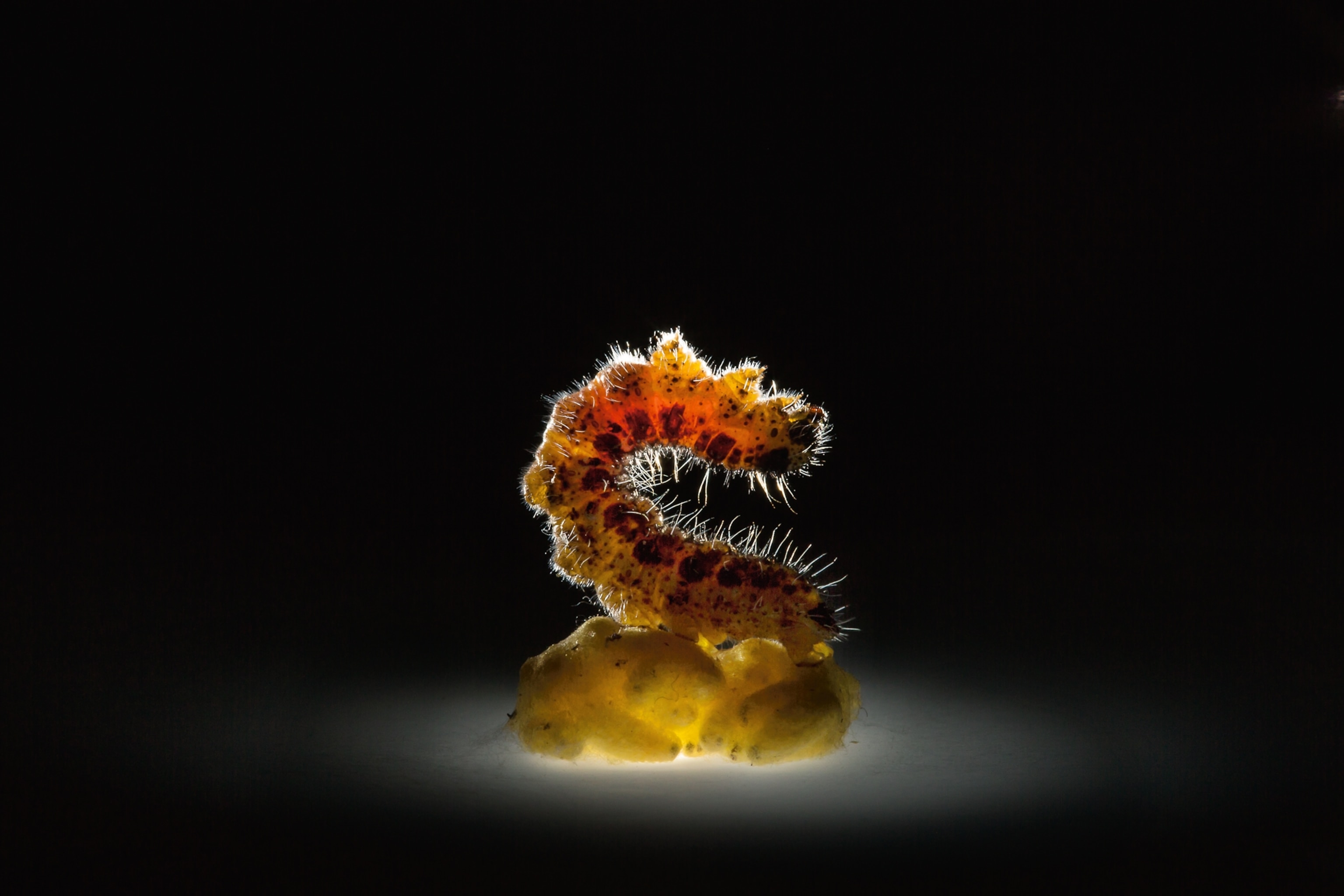
When the virus is ready to leave its host, the caterpillars undergo a radical change. They become agitated, feeding without rest. And then they begin to climb. Instead of stopping in safe spots out of the way of predators, the infected caterpillars creep higher into the trees, remaining on top of leaves or on tree bark in daylight hours, when they are easily seen by predators.
The baculoviruses carry genes for several enzymes. When they’re ready to leave their host, certain genes become active in caterpillar cells, producing a torrent of enzymes that dissolve the animal into goo. As the caterpillars dissolve, clumps of viruses shower down onto the leaves below, to be ingested by new caterpillar hosts.
To Kelli Hoover and David Hughes of Penn State University and their colleagues, the climbing behavior of the caterpillars seemed like an exquisite example of an extended phenotype. By causing their hosts to move up in trees, the baculoviruses increased their chances of infecting a new host down below. To test Dawkins’s idea, they examined the genes in baculoviruses, to see if they could find one that controlled the climbing of caterpillars.
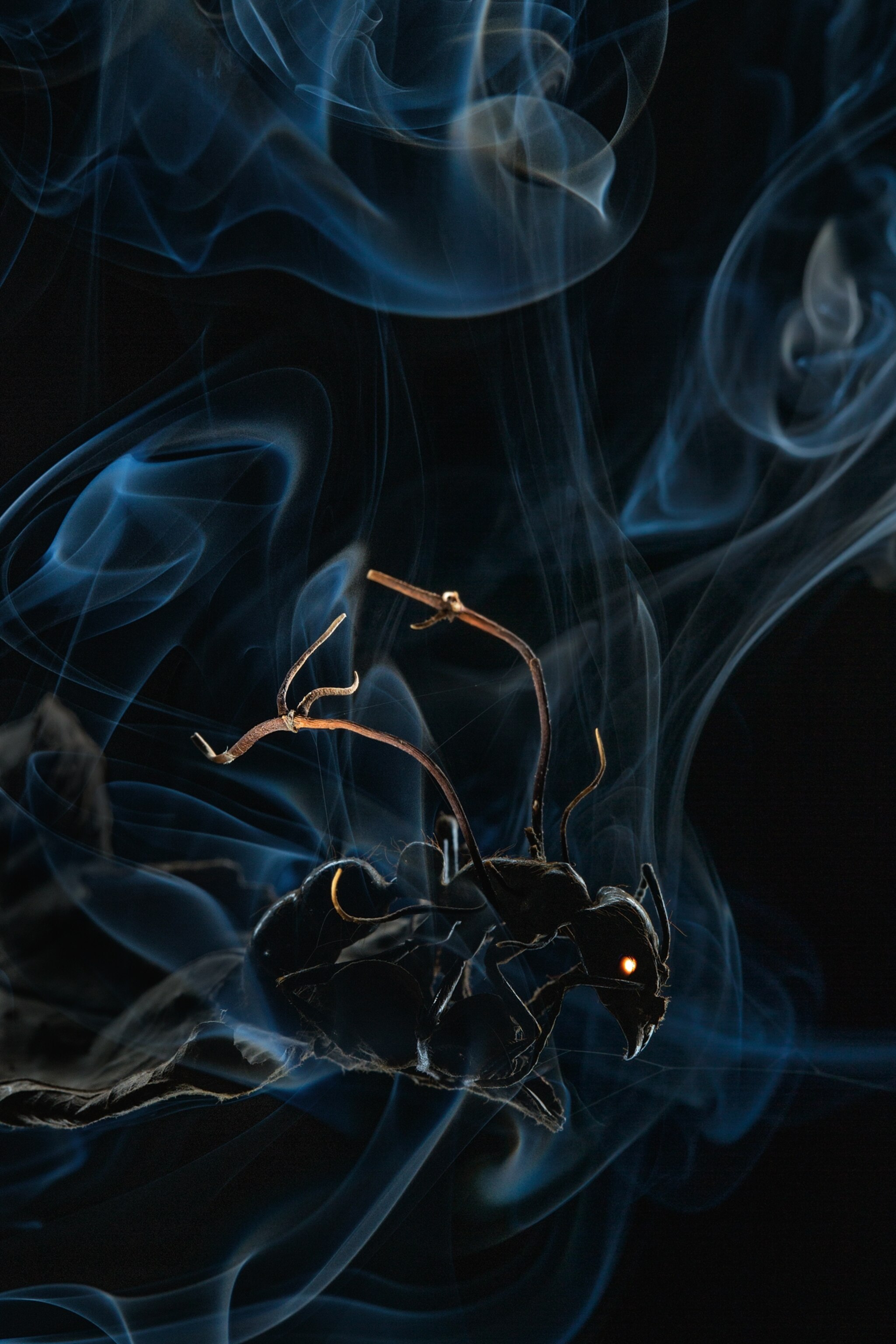

When the researchers shut down a single gene in the virus, called egt, it continued to infect caterpillar cells and replicate as before, even turning the caterpillars to goo as before. But baculoviruses without a working copy of egt could not cause the caterpillars to climb trees. It’s unlikely that many other parasites control their hosts with a single gene; an animal’s behavior is typically influenced by a number of its own genes, each contributing a small part to the sum. So it’s probable that many parasites control their hosts with a multitude of their own genes.
And what of D. coccinellae and its hapless ladybug host? While at the University of Montreal, Fanny Maure and her colleagues made a startling discovery: In turning its victim into a willing bodyguard, the wasp itself may only be acting as the extended phenotype of yet another organism. The researchers found that when a wasp injects an egg into a ladybug victim, she also injects a cocktail of chemicals and other substances—including a virus that replicates in the wasp’s ovaries. Some evidence suggests it is this virus that immobilizes the ladybug, protecting the wasp’s cocoon from intruders.
The virus and the wasp have the same evolutionary interests; turning a ladybug into a bodyguard produces more wasps, and more wasps beget more viruses. And so their genes work together to make the ladybug their puppet. The D. coccinellae wasp may not be the puppet master it once seemed. Instead it hides another puppet master within.
